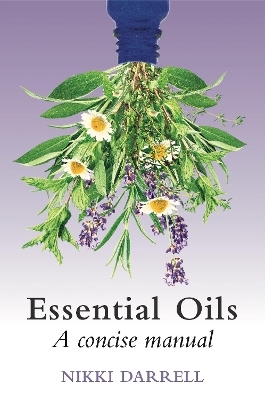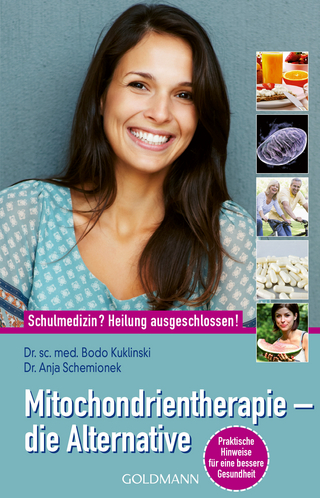
Essential Oils
Aeon Books Ltd (Verlag)
978-1-80152-016-4 (ISBN)
Written to help herbal practitioners expand their therapeutic repertoire, Essential Oils - A Concise Manual draws on Nikki Darrell's 30 years of experience to provide a look into the amazing capacity of essential oils in helping people with a wide range of health related issues.
This book covers all bases, starting by exploring the nature of the different essential oils, the importance of quality and how to blend them. The author also looks at the profiles of certain oils, and how to use them effectively for different conditions. Throughout this fascinating book, there is also a special focus on the ethical and sustainable sourcing of these wonderful and multifaceted oils.
Nikki Darrell has been working with plants, their medicine and healing, for over four decades as her fascination with the green beings started in early childhood and her primary teachers are the plants she works with. She has worked as a research scientist in the field of plant science; a practitioner of herbal medicine, aromatherapy, aromatic medicine, reflexology, massage, and body work; a gardener; an educator at all levels from introductory to 3rd level, campaigner, and author of five books and many articles. She holds a Masters in Social and Co-operative Enterprise which she embarked on due to her love of sustainable community development. She is devoted to the recovery of our societal and culture connection to the plant beings and our kin in Nature, bringing herbal medicine back into the centre of our communities.
INTRODUCTION
CHAPTER 1
The nature of essential oils
The extraction of essential oils
- Distillation
- Solvent extraction
Enfleurage
- Cold pressing or expression
Aromatic definitions
- Absolute
- Adulteration
- Cohobation
- Concrete
- Essential oil
- Hydrosol/hydrolat/floral water/aromatic water
- Rectification (Redistillation)
- Resinoids
CHAPTER 2
Selecting essential oils and aromatic waters for therapeutic use
- From a single named botanical species
- Country of origin
- Part used
- Chemotypes
- Harvesting techniques
- Correct distillation
- Distilled, not extracted
- Storage
Pure, complete, and natural after distillation
CHAPTER 3
Safety and contraindications
- Essential oils safe at normal topical dilutions (0–3%)
- Essential oils to be used with caution
Essential oils used exceptionally and with due caution
Contraindicated essential oils
- Epilepsy
- High blood pressure
- Low blood pressure
- Essential oil use in pregnancy
CHAPTER 4
Therapeutic applications and doses
Dosages and dilutions
Methods of delivery of essential oils
- Transdermal
- Massage
- Baths
- Compresses
- Talcum powders
- Intensive blends for topical use
Reflex point applications
Frictions
Inhalation
- Steam inhalations/facial saunas
- Vaporisation/room fragrancing
Internal use
- Herbal pills
- Vaginal applications
- Rectal application
- Gargles/mouth washes/sprays
Using essential oils in cooking and flavouring
CHAPTER 5
The chemistry of essential oils
Terpenes
- Monoterpenes
- Sesquiterpenes
Alcohols, phenols, acids, and aromatic aldehydes
Alcohols
- Monoterpenoid alcohols—monoterpenic alcohols/monoterpenols
- Sesquiterpenoid alchohols—sesquiterpenols
- Diterpenoid alcohols—diterpenols
- Phenols
- Aromatic aldehydes
- Acids
- Aldehydes
- Ketones
- Esters (ethanoates)
- Phenyl methyl ethers
- Oxides
- Coumarins
- Furanocoumarins
- Lactones
CHAPTER 6
Olfaction—the sense of smell
Olfaction and the psychology of fragrance
- Body odour
- Erogenous fragrance materials
CHAPTER 7
The art and therapeutics of blending
Considerations when blending
- Safety
- Time of day
- Therapeutic considerations
- Aesthetic
- Individual prescriptions
CHAPTER 8
Essential oil profiles:
Basil (Ocimum basilicum)
Bay Laurel (Laurus nobilis)
West Indian Bay (Pimenta racemosa)
Benzoin (Styrax benzoin)
Bergamot (Citrus bergamia per./Citrus aurantium var. bergamia)Black Birch (Betula lenta/Betula capinefolia)
Black Pepper (Piper nigrum)
Blue Cypress (Callitris intratropica)
Cajeput (Melaleuca leucandendron/cajeputi)
Cardamom (Elettaria cardamomum)
Carrot Seed (Daucus carota)
Cedarwood, Atlas (Cedrus atlantica)
Cedarwood, Himalayan (Cedrus deodora)
Chamomile, German (Chamomilla recutita/Matricaria chamomilla/Matricaria recutita)
Chamomile, Maroc/Moroccan (Ormenis mixta/multicaulis, Anthemis mixta)
Chamomile, Roman (Chamemelum nobile/Anthemis nobilis)
Cinnamon Leaf (Cinnamomum zeylanicum)
Cistus, Labdanum (Cistus ladanifer)
Clary Sage (Salvia sclarea)
Clove Bud (Eugenia caryophyllus/Syzgium aromaticum)
Cypress (Cupressus sempervirens)
Elemi/Manila Elemi/Java Almond (Canarium luzonicum)
Eucalyptus (Eucalyptus spp.)
Eucalyptus globulus
Eucalyptus citriodora
Eucalyptus dives
Eucalyptus polybractea
Eucalyptus radiata
Eucalyptus smithii
Sweet Fennel (Foeniculum vulgare var. dulce)
Frankincense (Boswellia carterii/thurifera)
Geranium (Pelargonium graveolens/Pelargonium x asperum)
Ginger (Zingiber officinalis)
Immortelle, Everlasting (Helichrysum italicum/angustifolium)
Juniper Berries Juniperus communis
Lavandin (Lavandula x intermedia)
Lavender (Lavandula officinalis, vera, angustifolia)
Lemon (Citrus limomum per.)
Lemongrass (Cymbopogon spp.)
West Indian Lemongrass (Cymbopogon citratus)
East Indian Lemongrass (Cymbopogon flexuosus)
Mandarin (Citrus reticulata per.)
Manuka (Leptospermum scoparium)
Marjoram, Spanish (Thymus mastichina)
Marjoram, Sweet (Origanum marjorana)
May Chang, Exotic Verbena, Tropical Verbena (Litsea cubeba)
Melissa/Lemon Balm (Melissa officinalis)
Myrrh (Commiphora molmol/myrrha)
Myrtle (Myrtus communis)
Neroli (Citrus aurantium ssp. aurantium flos)
Niaouli (Melaleuca quinquinervia/viridiflora)
Nutmeg (Myristica fragrans)
Orange, Bitter (Citrus aurantium ssp. Aurantium per.)
Oregano (Origanum vulgare)
Palmarosa (Cymbopogon martinii)
Patchouli (Pogostemon patchouli/cablin)
Peppermint (Mentha x piperita)
Petitgrain (Citrus aurantium ssp. aurantium fol.)
Pine (Pinus sylvestris)
Ravensara (Ravensara aromatica)
Rose (Rosa damascena/centifolia/gallica)
Rosemary (Rosmarinus officinalis/Salvia rosmarinus)
Sandalwood (Santalum album)
Sandalwood, Western Australian (Santalum spicatum)
Spearmint (Mentha spicata/viridis)
Spruce, Black (Picea mariana)
Ti Tree or Tea Tree (Melaleuca alternifolia)
Thyme (Thymus vulgaris)
Sweet or soft Thymes
Valerian (Valeriana officinalis var. angustifolium)
Vetivert (Vetiveria zizanoides)
Yarrow (Achillea millefolium)
Ylang Ylang (Cananga odorata var. genuina)
CHAPTER 9
It’s all about the base-carrier oils, macerated oils, and creams
Selecting oils for medicinal and dietary use
The nature of fats
Fats sources
Composition of fats
A brief word about cholesterol
Essential fatty acids and γ-linoleic acid
The chemistry of fats
Refining and processing
For and against refining
Choosing base oils
- Almond (Prunus amygdalus var. dulcis)
- Apricot kernel (Prunus armeniaca/Armeniaca vulgaris)
- Avocado (Persea americana)
- Blackcurrant (Ribes nigrum)
- Borage/Star flower (Borago officinalis)
- Coconut (Coco nucifera)
- Corn/maize (Zea mays)
- Evening primrose seed (Oenothera biennis)
- Grapeseed (Vitis vinifera)
- Hazel nut (Corylus avellana)
- Jojoba (Simmondsia chinensis)
- Linseed (Linum usitassium)”
- Macadamia nut (Macadamia integrifolia/ternifolia)
- Neem (Azadirachta indica) Also known as margosa oil
- Olive (Olea europaea)
- Palm kernel (Elaeis guineensis)
- Passionflower (Passiflora incarnata)
- Peanut (Arachis hypogaea)
- Rosehip (Rosa rubiginosa)
- Safflower (Carthamus tinctorius)
- Sesame (Sesamum indicum)
- Soybean (Glycine max)
- Sunflower (Helianthus anuus)
- Tamanu (Caulophyllum inophyllum)
- Wheatgerm (Triticum vulgare)
- Vitamin E
Solid fats
Macerated oils and herbal creams
- Uses and applications
- Properties and uses of specific oils
CHAPTER 10
Hydrosols/hydrolats/aromatic waters
Uses and applications
CHAPTER 11
Oils for the body systems and specific conditions
- The respiratory system
- The skin
- Muscles and bones
- The digestive system
- Vascular and lymphatic systems
- Immune function
- The reproductive and urinary systems
CHAPTER 12
Essential oils and emotional health
Essential oils and the mind
Broad classifications
CHAPTER 13
Formulations for various conditions
- Integumentary system
- Respiratory system
- Digestive system
- Musculoskeletal system
- Urinary system
- Lymphatic system
- Gynaecological conditions
Neuroendocrine function
- Sundry formulae
CONCLUDING REMARKS
BIBLIOGRAPHY
INDEX
| Erscheinungsdatum | 19.10.2022 |
|---|---|
| Verlagsort | London |
| Sprache | englisch |
| Maße | 152 x 229 mm |
| Themenwelt | Sachbuch/Ratgeber ► Gesundheit / Leben / Psychologie ► Alternative Heilverfahren |
| Medizin / Pharmazie ► Naturheilkunde ► Phytotherapie | |
| ISBN-10 | 1-80152-016-X / 180152016X |
| ISBN-13 | 978-1-80152-016-4 / 9781801520164 |
| Zustand | Neuware |
| Informationen gemäß Produktsicherheitsverordnung (GPSR) | |
| Haben Sie eine Frage zum Produkt? |
aus dem Bereich


